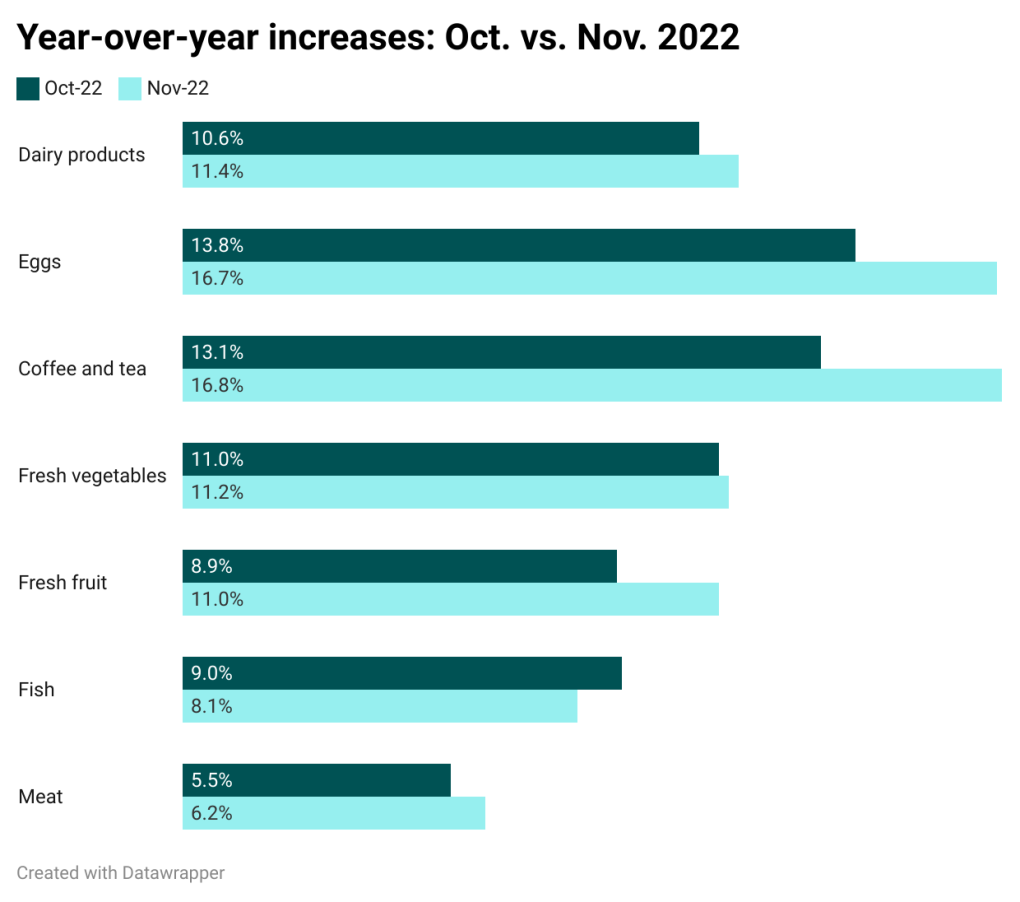While the overall inflation rate for November fell slightly, grocery costs rose at a faster annual rate this month.
On Wednesday, Statistics Canada announced that November’s inflation rate was 6.8 per cent, down from 6.9 per cent in October and September. Slowed price growth for gas and furniture contributed to the slight rate decrease, it stated in its latest price index report.
Grocery prices went the other way, however, as food costs rose 11.4 per cent annually in November, up from 11 per cent in October. September’s yearly increase also hit a high of 11.4 per cent, which was the largest spike seen since 1981.
Canadians have faced fast-rising grocery prices since near the end of 2021, as that’s when price increases for food sold in stores began to outpace consumer inflation, according to a Statistics Canada report published in November.
Factors impacting grocery store prices include supply chain disruptions due to COVID-19, labour shortages, changes in purchasing patterns, poor weather where food is grown, tariffs, and the war in Ukraine, according to the report.
Among the food items that increased the most in price in November:
- edible fats and oils (up 26 per cent)
- non-alcoholic beverages(up 19.4 per cent)
- coffee and tea (16.8 per cent)
According to Statistics Canada, the price of chicken also rose 9.3 per cent on a year-over-year basis, due to a reduced global supply. Farms have had to cull and quarantine birds infected with avian influenza, the agency states in its report.
Compared to October, increases were seen in several categories including dairy products, eggs, coffee and tea, vegetables and fruit. Slight downward trends were seen with fish prices, dropping to 8.1 per cent from 9 per cent in October.
The edible oils increase is connected to consumer behaviour, Statistics Canada said, explaining as the cost of one oil increases, consumers tend to seek out other alternatives. 
The result is rising prices for those products, tooaccording to the November report on food costs.
Both Russia and Ukraine have a direct role in agriculture and oil production. As well, Russia is the largest exporter of wheat globally and Ukraine is the fifth-largest, resulting in “price volatility” due to the war, according to Statistics Canada.







































